In a nutshell, the Project Communication Plan is a tool used by project managers to ensure that communication between all project stakeholders is clear, consistent, and timely. This plan outlines the strategy and tactics for how the information will be shared throughout the project lifecycle.
As a project manager, you are also the person that team members come to especially when your key players are in need of rapid quick guidance or answer. That’s why you’ll be responsible to communicate clearly and productively so you won’t be missing opportunities that may arise to get the project done.
- Creating a Communication Plan
- The many benefits of effective communication Plans
- How to choose your communication channels
- Understanding the communication styles of a project manager
- Essential components of a communication plan
- Detailed documentation parts
- Pitfalls when creating a project communication plan
- Best practices of a communication plan
- What is a Project Communication Plan?
- How do you fix a lack of communication on a project?
- What are 3 common methods of communication in project management?
- How do you effectively communicate with stakeholders?
It should be tailored to the specific needs of the project and the stakeholders involved and it should also be reviewed and updated on a regular basis as the project evolves.
Creating a Project Communication Plan is super important as it can make the difference between a successful project and a failed one, differentiating you from a good project manager from a bad one.
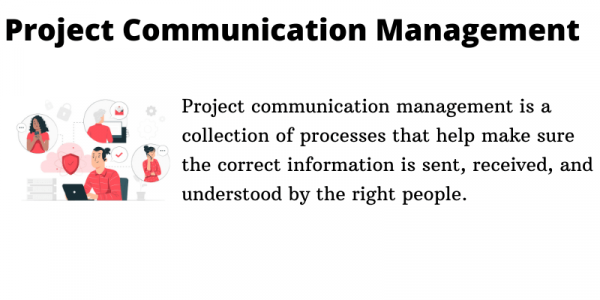
Creating a Communication Plan
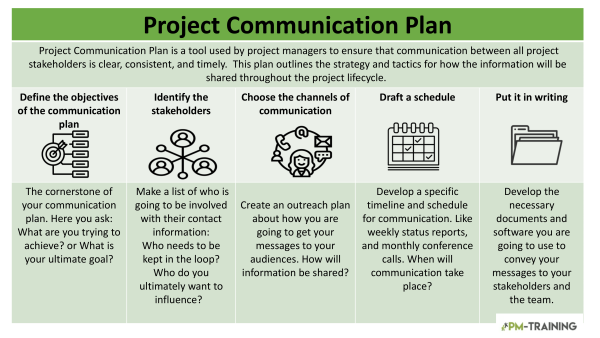
In any project, effective communication is essential to success. And that information is shared in a timely and efficient manner.
Creating a communication plan can seem like a daunting task, but it doesn’t have to be.
Here is what a communication plan should include the following elements:
- Define the objectives of the communication plan.
This is the cornerstone of your communication plan, here you ask:
What are you trying to achieve? or What is your ultimate goal?
- Identify the stakeholders
Here you define your key audience and make a list of who is going to be involved with their contact information:
Who needs to be kept in the loop? Who do you ultimately want to influence?
- Choose the channels of communication
Here you create an outreach plan about how you are going to get your messages to your audiences. That is to say the methods of communication such as; email, phone, in-person, etc.
How will information be shared?
- Draft a schedule
Develop a specific Timeline and schedule for communication, e.g., weekly status reports, monthly conference calls, etc.
When will communication take place?
- Put it in writing.
A communication plan is more likely to be effective if it’s in a written format.
You must develop the necessary documents and software you are going to use to convey your messages to your stakeholders and the team.
By including all of these elements in your communication plan, you can ensure that everyone involved in the project is on the same page and that the project runs smoothly.
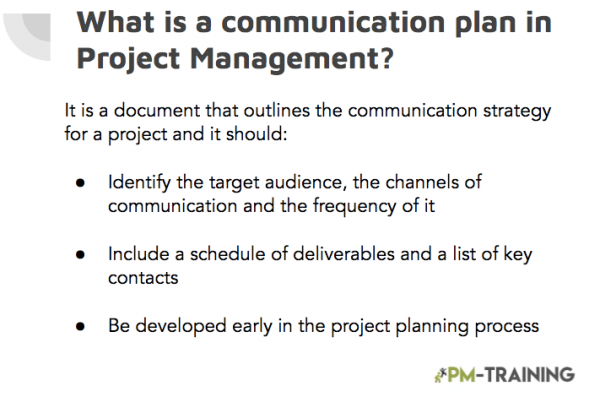
The many benefits of effective communication Plans
Apart from ensuring that all stakeholders are informed about the project, it can also help to resolve conflicts and keep every team member on track by allowing them to understand their roles effectively.
There are many benefits to having a communication plan, but here are some of the most
important ones:
- Improved communication among project stakeholders
- A clear understanding of roles and responsibilities by keeping the project team on track and accountable
- Early identification and resolution of conflict
- Better risk Management
- Enhanced team collaboration by preventing miscommunication and misunderstandings
- Better decision making
- It allows you to track the progress of the project and make necessary adjustments along the way
A well-crafted project communication plan is an essential tool for any project manager. If you’re looking to set your project up for success, be sure to develop a detailed and comprehensive communication plan.}
Perhaps most importantly, a communication plan ensures that all stakeholders are kept up to date on the progress of the project and that any changes or issues are promptly communicated.
This ensures that everyone is working towards the same goal and that potential problems are identified and dealt with quickly.
Overall, a communication plan is an essential tool for any project manager and can make the difference between a successful project and one that fails to meet its objectives.
The 5Ws model
A communication plan can be as simple or as complex as you need it to be, but at a minimum, it should include the 5Ws model as a framework for developing an effective plan and defining your key audience.
It can be used to ensure that all stakeholders are kept up to date on the project’s progress, your key players in your team understand their roles and responsibilities, and that the project is proceeding as planned.
- The 5Ws model consists of the following five elements:
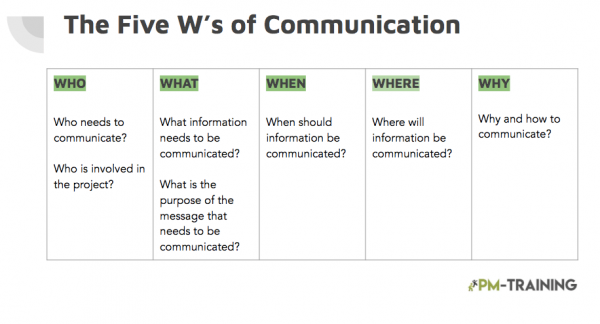
This is a vital part of successful project management. By answering these questions, you can develop a communication plan that will run successfully.
How to choose your communication channels
This is key and that’s because of your key audience. Here you will adjust your type of communication plan according to the type of audience either your stakeholders or team members.
There are many communication channels that can be used for communication in a project, and the best channel to use will depend on the specific project and team involved.
However, there are a few channels that are commonly used in project communication plans and can be effective in most situations, let’s see some examples of the most common ones:
- One of the most common channels used in project communication is email. Email is a quick and easy way to communicate with project team members and can be used to send updates, tasks, or attachments.
- Face-to-face meetings are often the best way to communicate important information. They allow for direct communication and provide the opportunity for body language and nonverbal cues to be used. They also allow for immediate feedback and questions. However, face-to-face meetings can be time-consuming.
- Another channel that is often used in project communication is instant messaging. Instant messaging can be used to send quick updates or questions to team members and can be a good option for remote teams.
- Project management software: Project management software, such as Asana or Jira, can be used to send messages, assign tasks, and track project progress.
Consider when choosing a communication channel the audience you are trying to reach. For example, if you are trying to communicate with stakeholders who are not directly involved in the project, then a project website or a newsletter would be just ideal for it.
Understanding the communication styles of a project manager
There are a variety of communication modes and styles that people use in order to communicate with one another.
Knowing the different communication styles can help you better understand yourself and others.
It can also help you resolve conflicts and improve communication in relationships. So what are the different communication styles and preferences? Let’s take a look.
- The most common mode of communication is verbal, which is when people use words to communicate with each other. However, there are also nonverbal modes of communication, such as body language and facial expressions.
- Additionally, there are different styles of communication, such as passive, assertive, and aggressive.
Each mode and style of communication has its own strengths and weaknesses.
- Verbal communication is great for conveying specific information, but it can be difficult to communicate emotions or feelings.
- Nonverbal communication is often used to supplement verbal communication, but it can be easy to misread or misunderstand nonverbal cues.
- And finally, assertive communication is considered to be the most effective style of communication, but it can also be seen as aggressive or confrontational.
Essential components of a communication plan
As mentioned before, a communication plan is a road map for how you will communicate with your audience.
This includes who you will communicate with, what you will say, and how you will say it, allowing you to be clear and consistent in your messaging, and to stay on track with your goals.
Detailed documentation parts
- When creating the document is important to add the general aspects such as:
- What is the project title
- The project Manager
- Who are the main Stakeholders
- The Executive sponsors if necessary
- Also, the main aspects should be pointed out in a table where the:
- Deliverable info
- The recipients of your messages
- The Delivery method or the communication channel
- The time or schedule will take
- And the member who is going to be responsible for it
Another key component can also be the external resource links to make communication way more productive and clearer.
- This takes part of a section of your document that can be done as a table.
A communication plan consists of the following elements:
- Goals:
- Target audience:
- Message:
- Channels:
- Timeline
- Risk and Mitigation strategies
- The project deliverables.
- The project’s status updates
- Budget:
- Evaluation
Your communication plan should be tailored to your specific situation and goals.
Pitfalls when creating a project communication plan
So far, you are understanding what a project communication plan is and how to formalize this communication and ensure that everyone is kept in the loop.
However, when creating a project communication plan, there are a few potential pitfalls that you should avoid.
- First, make sure that you involve all of the relevant stakeholders in the planning process. Without buy-in from everyone involved, it will be difficult to get the communication plan off the ground.
- Make sure that your plan is realistic and achievable. Don’t try to over-communicate or inundate your team with too many updates as it can quickly become overwhelming and lead to problems down the line.
Instead, focus on creating a plan that is clear, concise, and easy to follow. Keep your goals achievable so that you can actually implement the plan successfully.
- Another pitfall to avoid is failing to account for different communication styles. Make sure that your plan takes into account the different ways that people prefer to receive information.
Some people may prefer email updates, while others may prefer face-to-face meetings.
The consequences of poor communication with stakeholders would look like
If you don’t communicate effectively with your stakeholders, the consequences can be significant. On the other hand, good communication with stakeholders is essential to determine the success of any project. Stakeholders need to be kept up to date with progress, any changes that may affect them, and any potential risks or issues.
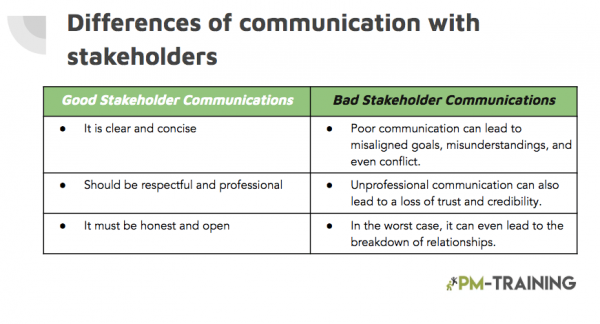
Finally, don’t forget to review and update your communication plan regularly, and don’t make promises you can’t keep.
As your project evolves, so too should your communication plan.
By keeping your plan up-to-date, you can ensure that everyone involved in the project is always on the same page.
Best practices of a communication plan
When embarking on a new project, it is important to have a clear and concise communication plan. This will ensure that all stakeholders are kept up to date on the project’s progress and that everyone is aware of any changes that need to be made.
Here are a few tips to help you create a successful communication plan for your next project:
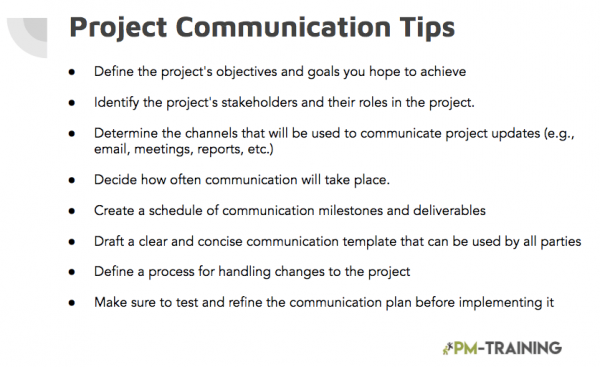
Just remember:
The success of any project rests heavily on effective communication between all parties involved.
A clear and concise communication plan can help to ensure that everyone is on the same page from start to finish, and can make the difference between a smoothly-run project and a complete disaster.
With a well-thought-out communication plan in place, you can rest assured that your project will stay on track.
What is a Project Communication Plan?
A communication plan is a document that sets out how you will communicate with stakeholders during a project. It should include who you need to communicate with, how you will do it, and what information you need to share. This plan helps to ensure that everyone involved is kept up to date with what is happening and that they understand how they can be involved in the project.
How do you fix a lack of communication on a project?
You should make sure that everyone involved in the project understands the importance of communication. Also, you can start to implement some communication strategies. This can involve setting up regular check-ins, using project management software that encourages communication, or simply being more proactive about communicating with your team.
What are 3 common methods of communication in project management?
Use verbal communication: This includes face-to-face conversations, phone calls, video calls, and voice messages. Written communication: emails, text messages, chat messages, and project updates. Visual communication: presentations, diagrams, charts, and other visual aids. Each of these three methods has its own strengths and weaknesses, so it’s important to use all of them in order to get the most out of your communication.
How do you effectively communicate with stakeholders?
Keep the lines of communication open. Make sure stakeholders know how to contact you and that you are available to answer their questions. Communicate regularly, and keep stakeholders updated on the project’s progress and any changes that may affect them. Be clear and concise. When communicating project information, make sure it is clear and concise. Avoid using technical jargon or acronyms that stakeholders may not be familiar with.
